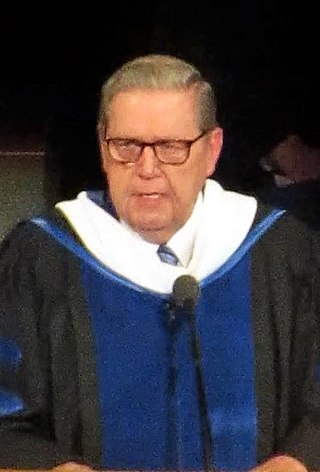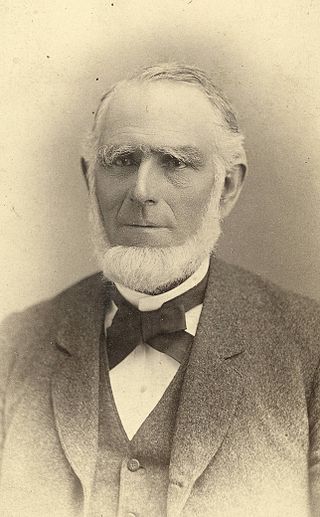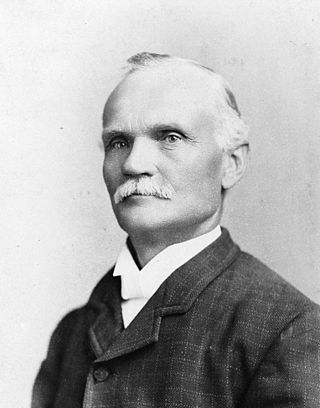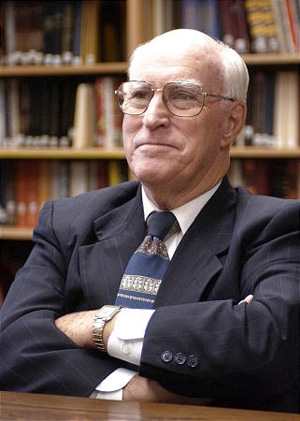Related Research Articles
Dallin Harris Oaks is an American religious leader and former jurist and academic who since 2018 has been the first counselor in the First Presidency of the Church of Jesus Christ of Latter-day Saints. He was called as a member of the church's Quorum of the Twelve Apostles in 1984. Currently, he is the second most senior apostle by years of service and is the President of the Quorum of the Twelve Apostles.

Brigham Young University–Hawaii (BYU–Hawaii) is a private college in Laie, Hawaii. It is owned and operated by the Church of Jesus Christ of Latter-day Saints. BYU–Hawaii was founded in 1955 and it became a satellite campus of Brigham Young University (BYU) in 1974. In 2004, it was made a separate institution. The college's sole focus is on undergraduate education.

Jeffrey Roy Holland is an American educator and religious leader. He served as the ninth president of Brigham Young University (BYU) and is the acting president of the Quorum of the Twelve Apostles of the Church of Jesus Christ of Latter-day Saints. As a member of the Quorum of the Twelve, Holland is accepted by the church as a prophet, seer, and revelator. Currently, he is the third most senior apostle in the church.

Missionary Training Centers (MTC) are centers devoted to training missionaries for the Church of Jesus Christ of Latter-day Saints. The flagship MTC is located in Provo, Utah, adjacent to the campus of Brigham Young University (BYU), a private university owned and operated by the church.

Charles William Penrose was a member of the Quorum of the Twelve Apostles of the Church of Jesus Christ of Latter-day Saints from 1904 to 1911. Penrose was also a member of the First Presidency, serving as a counselor to church presidents Joseph F. Smith and Heber J. Grant from 1911 until his death.

Abraham Owen Smoot was an American pioneer, businessman, religious leader, and politician. He spent his early life in the Southern United States and was one of seven children. After being baptized a member of the Church of Christ, predecessor to the Church of Jesus Christ of Latter-day Saints, Smoot served as a missionary in Kentucky, Tennessee, South Carolina, and England. He received no formal education, but learned to read as a child and later attended the School of the Prophets in Kirtland, Ohio. Like other early members of the LDS Church, Smoot practiced plural marriage, eventually marrying six women and having 24 children. After migrating west to Utah Territory, he was elected as the second mayor of Salt Lake City and maintained this position from 1857 to 1866. He was then assigned by Brigham Young to move to Provo, where he served as stake president and mayor from 1868 to 1881. He assisted financially in the construction of the Provo Tabernacle—today the Provo City Center Temple—as well as that of the Utah Southern Railroad. Smoot was the first president of the board of trustees of Brigham Young Academy (BYA)—which later developed into Brigham Young University (BYU). He was an early financial supporter of the institution and was nicknamed the "foster father" of the academy. His goal was to make education available to young Latter-day Saints. Today, the Smoot Administration Building at BYU is named after him.

Karl Gottfried Maeser was a prominent Utah educator and a member of the Church of Jesus Christ of Latter-day Saints. He served 16 years as principal of Brigham Young Academy. Although he was not the first principal of the Academy, he is considered its founder. The Academy later became Brigham Young University (BYU) in 1903.

George Henry Brimhall was president of Brigham Young University (BYU) from 1904 to 1921. After graduating from Brigham Young Academy (BYA), Brimhall served as principal of Spanish Fork schools and then as district superintendent of Utah County schools, finally returning to BYU. In April 1904, Brimhall became president of the school, which had become BYU in October 1903. As president of BYU, Brimhall helped institute the collegiate program, departments for specific subjects, and an emphasis on religious learning.
Merrill Joseph Bateman is an American religious leader who was the 11th president of Brigham Young University (BYU) from 1996 to 2003. He is an emeritus general authority of the Church of Jesus Christ of Latter-day Saints and was the LDS Church's 12th presiding bishop in 1994 and 1995. Bateman was the Sunday School General President of the LDS Church from 2003 to 2004, a member of the Church's Presidency of the Seventy from 2003 to 2007, and the president of the Provo Utah Temple from 2007 to 2010.
Mary Nielsen Cook was a counselor in the general presidency of the Young Women organization of the Church of Jesus Christ of Latter-day Saints from 2007 to 2013. She served as second counselor to Susan W. Tanner, with Elaine S. Dalton as first counselor, from March 2007 until April 2008. In April 2008, Dalton succeeded Tanner as Young Women General President and selected Cook as her first counselor.

Robert James Matthews was a Latter-day Saint religious educator and scholar, teaching in the departments of Ancient Scripture and Religious Education at Brigham Young University (BYU) in Provo, Utah.
Richard Charles Neitzel Holzapfel is a former professor of Church History and Doctrine at Brigham Young University (BYU) and an author on topics related to the Church of Jesus Christ of Latter-day Saints, Western and Utah History, and the New Testament. As of 2018, Holzapfel is working in the LDS Church's Missionary Department as a senior manager.
Sidney Branton Sperry was one of three scholars who were members of the Church of Jesus Christ of Latter-day Saints who began the scholarly and systematic study of the Book of Mormon in the mid-20th century — the other two being John L. Sorenson and Hugh W. Nibley. Sperry was also a leading Latter-day Saint scholar of the Bible.
Gary L. Browning is an American Russian language academic and was the first mission president of the Church of Jesus Christ of Latter-day Saints in Russia, and the Baltic states of Estonia, Latvia, and Lithuania.

Lucy Jane ("Jennie") Brimhall Knight was a leader in the Church of Jesus Christ of Latter-day Saints. She was also one of the first two single female missionaries of the LDS Church.

Amanda Inez Knight Allen was a Mormon missionary and a Utah politician. In 1898, she became one of the first two single women to be missionaries for the Church of Jesus Christ of Latter-day Saints.

Mary Ellen Edmunds is an American religious public speaker, author, and nurse. A member of the Church of Jesus Christ of Latter-day Saints, she was the Director of Training in the Missionary Training Center in Provo, Utah 1978–1995. She also served as a member of the Relief Society general board. Edmunds also served as an LDS missionary in Taiwan, Hong Kong, the Philippines, and Indonesia. She was the director of the Thrasher International Program for Children in Nigeria for a short time.

Merry May Talmage was a member of the Church of Jesus Christ of Latter-day Saints and was the wife of James E. Talmage, a member of the Quorum of the Twelve Apostles. She oversaw the Relief Society in Europe from 1924 to 1927 when her husband was the president of the European Mission of the church.

Delta Phi Kappa (ΔΦΚ), was a fraternity for male returned missionaries of the Church of Jesus Christ of Latter-day Saints at colleges in Utah, Idaho, and Arizona. It existed from 1920 to 1978.

Florence Jepperson Madsen was an American contralto singer, vocal instructor, and professor of music. She served as the head of the music department of Brigham Young University (BYU) for ten years.
References
- 1 2 3 4 5 6 7 8 9 10 11 12 13 14 15 16 Turley, Kylie Nielson (Winter 2008). "Yesharah: Society for LDS Sister Missionaries". Journal of Mormon History. 34 (1): 168–204. JSTOR 23290720.
- ↑ Hanks, Maxine (1992). Women and Authority: Re-emerging Mormon Feminism. Salt Lake City: Signature Books. p. 319. ISBN 1560850140.
- ↑ "Yesharah Chapters Hold Long Record of Church, Civic Work". The Sunday Herald. Provo, Utah. 9 April 1961. Retrieved July 12, 2016.
- ↑ "B.Y.U. Invited to Join: Y.D.D. Club on Y. Campus Nucleus for Friars' Club". Friar News. 3 (2): 1–2. December 1928.
- ↑ "Friars' Club Constitution" (1932) [textual record]. Yesharah Society records, Series: 1, Box: 1, File: Y2, p. 1. Provo, Utah: L. Tom Perry Special Collections, Brigham Young University.
- 1 2 3 4 5 "Constitution of the "Y" Missionary Women" (1932) [textual record]. Yesharah Society Records, Series: 1, Box: 1, File: Y2, p. 1. Provo, Utah: L. Tom Perry Special Collections, Brigham Young University.